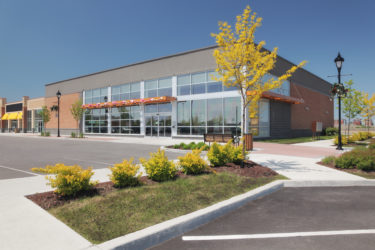DST Properties & Cash Flow Trends: Is Higher Always Better?

Real estate investors routinely ask me the same question over and over: “what should I be wary of when looking at DST real estate investments?” My answer is always the same: beware of high cash flow! This answer often comes as a bit of a shock.
As investors, we are often told to consider cash flow when analyzing the worth of a particular investment. And while there is truth to that, the reality is that when analyzing real estate investments through a DST for myself and my clients, cash flow is not my number one concern – it is always location. Cash flow falls secondary in my analysis, and the reason is that higher cash flow DSTs often carry a greater risk of principal loss. Although, there are certainly exceptions to this rule.
Shifting Focus to Location-Based Analysis
Growth in income and value over time is more important than the level of starting cash flow today. Indeed, I have invested in seventeen management-free investment properties, both TIC and DST structured, and most of these have been at the lower end of the starting cash-flow range. That is not by accident.
Rather than focusing on higher cash flow, I focus specifically on locations and asset types that are trending up, even in a down economy. Based on my own historical evidence, I attribute about 65% of the success of a real estate investment to its location factors: population, job, wage, and rental rate growth; infill, and high-barrier-to-entry locations that are close-in to the economic drivers in any particular area.
Cash Flow as a Secondary Consideration
There are several reasons why cash flow is often a secondary consideration. Primarily, a property’s growth in income and value are, over time, far more important to your success as a real estate investor than starting cash flow is today. Other reasons include:
1. Asset Class
A property’s asset class could be in decline. Cap rates and cash flow for most retail properties have risen at the same time they have compressed for multifamily and industrial assets. Why? Blame the Amazon effect – the benefits of eCommerce are driving many brick and mortar retailers out of business. When we need or want a product, we have two choices: 1) Hop into the car, potentially fight traffic as we drive to a store that stocks the product, get out of the car, walk into the store, and hunt a bit to find what we want. We may look up reviews to assess the product, and when our choice is made, we go to the counter, pay, walk to the car, and drive home. It is ultimately a time consuming and inefficient process. 2) Or, we type a couple of words into a search engine, scan the reviews, click to order, and go about the rest of our day knowing the product will arrive within a day or two – or even the same day. It is a process that takes a fraction of the time compared to the traditional shopping experience. The second option is a trend that is not slowing down, and there does not appear to be a reversal in this type of consumption. It has radically and fundamentally changed the way commerce works and, thus, it has radically and fundamentally changed the dynamics of commercial real estate. It is why many previously strong retail properties are now trading at very high cap rates, even with long-term net leases in place. As values go down, cap rates go up. These types of properties have higher cap rates because they have higher risk. It is like catching that proverbial “falling knife.” The retail tenant may go bankrupt, may downsize, or may relocate to a vacant property down the street where the landlord is offering lower rent because they are desperate for a tenant. Even if the tenant stays in the property, the value will likely go down as cap rates continue to expand in the retail sector. The way I see it, buying into most long-term net-leased commercial properties is a way to lose your principal slowly.
2. Bad Locations
Generally, the better the location, the lower the cash flow. Using an extreme example, consider a 300-unit, Class B, multifamily property in Flint, Michigan, which might produce a cash flow of 8%. Compared to an identical property in Alexandria, Virginia, which may only pay 4%. Without additional facts to consider, deciding on which property to choose as the better investment is clear: the one with higher cash flow. But when you take other factors into consideration – namely, location – your decision can change.
While the Flint property might be paying higher cash flow today, there is a reason for that – a bad reason. The city is in decline. It has been losing jobs and population for years. As such, an investor cannot count on income growth, job growth, and rental growth to propel the Flint market. The hope is that higher cash flow will offset the lack of growth and the probability of asset value stagnation (or decline). The reality is that cash flow (and value) will continue to decline as the market deteriorates.
Alexandria, however, is entirely different. Amazon selected the city for its second headquarters, which is expected to bring in more than 25,000 high paying jobs (meaning jobs paying $150,000+) over the next decade or so. Some estimates suggest that each Amazon job will produce 2.6 ancillary jobs. The net effect that Alexandria is experiencing, and will continue to experience, expands job growth, population growth and wage growth, which will drive rental-rate growth. In turn, this grows asset-prices over time, and as the market continues to expand, cash flow (and value) will increase.
This is just one example – albeit a big one – of the dynamic growth occurring in the Washington, D.C., MSA, which explains why investing in a higher cash flow DST is not always the best decision. As such, real estate investors do not have to demand big cash flow today because they know the bigger pay off comes down the road.
3. Financial Engineering
When we come across properties with the higher-than-normal cash flow it always strikes us as too good to be true given the market, asset type, and prevailing cap rates. When we analyze the financials to make sure we are not missing something, our assumptions are almost always validated.
For example, digging into the financials of a recently available property, from a sponsor who we no longer do business with, we discovered the higher cash flow advertised was not based entirely on the cash flow from operations of the property. The sponsor was advertising a 6% starting cash flow on a Class A property in a high-growth infill (urban) location. However, the sponsor purchased the property at a 4% Cap Rate. The interest rate on the loan was 4.55%, so the owner was not benefiting from positive arbitrage (lower interest rate on loan than cap rate). In fact, this was a negative arbitrage situation. After adding in fees and reserves, which were much higher than the normal range, the property was only generating 3.2% cash flow.
So, how was the property paying a 6% cash flow? Because the sponsor was using the investors’ own capital to make up the difference between the actual net cash flow the property would provide and the stated cash flow in the offering. They did this by setting up a reserve account funded by the investors to pay almost half of the stated cash flow each month. This is called “financial engineering.” By advertising a cash flow that is higher than achievable, the sponsor is able to raise more money from investors with an overzealous desire for high cash flow. But the high return is an illusion, a marketing ploy.
Even though a portion of the cash flow is actually a return of the investors’ equity, it is still treated as income for tax purposes. By financially engineering a higher return than what is actually generated by the property, the sponsor is forcing investors to pay tax on the money they would not otherwise pay taxes on. This is all to make their property appear more attractive than it really is. Even worse, this kind of financial engineering tends to fall apart because eventually, the reserve account funded by the investors with their own equity runs out. In this example, the reserve accounts would only last about a year. After that, unless rents suddenly shot up to a level that matched the sponsor’s projections (a highly unlikely event), the property is going to run into some serious financial difficulties. It is, in short, a big risk and one we avoid.
4. Business-Related Real Estate Investments
Some of the highest yielding real estate investments are those that also require running a business outside of traditional real estate management. These include primarily assisted living and memory care properties. I will not go into this too deeply, but there are large risks with real estate centered businesses such as assisted-living, memory-care, and the like that do not justify the potential cash flow benefits. These kinds of businesses face a litany of unique risks ranging from excessive competition, state and federal government regulation, and Medicaid funding rules that could change unexpectedly. Even a strong operator faces challenges, and often times investments in these properties are not being offered by the strongest operators in the industry. Additionally, although the demographics (i.e., aging population) appear strong, recent studies show that more elders are choosing to age at home, as it is easier with the technologies and services available.
Ultimately, the point here is that higher cash flow is often an indicator in business and real estate that there are underlying risks and overcompensation, which can quickly drain the value of an investment.
Our Conclusions
We understand the push for higher cash flow. In a low-rate environment, every extra basis point you can squeeze from an investment is meaningful. But just as a stock with an abnormally high dividend yield often portends a troubled company, so too does a high cash flow property often portend trouble beneath the surface.
In a recent interview, famed economist and investor Gary Shilling was asked if the trend of investing in real estate will accelerate as we head into this next recession. Shilling responded by stating, “Apartments are still very attractive. I personally have investments in apartments. You have to be cognizant of the three most important things in real estate: location, location, location.” Shillings’ statement mirrors our own viewpoint, and what we keep in mind since “There is a tendency to go overboard in people’s zeal for yield in real estate […] you have got to be careful.”
If you have been presented with a high cash flow DST option, contact us so we can analyze the property with an objective eye. We would be happy to discuss our thoughts and analysis with you more.










